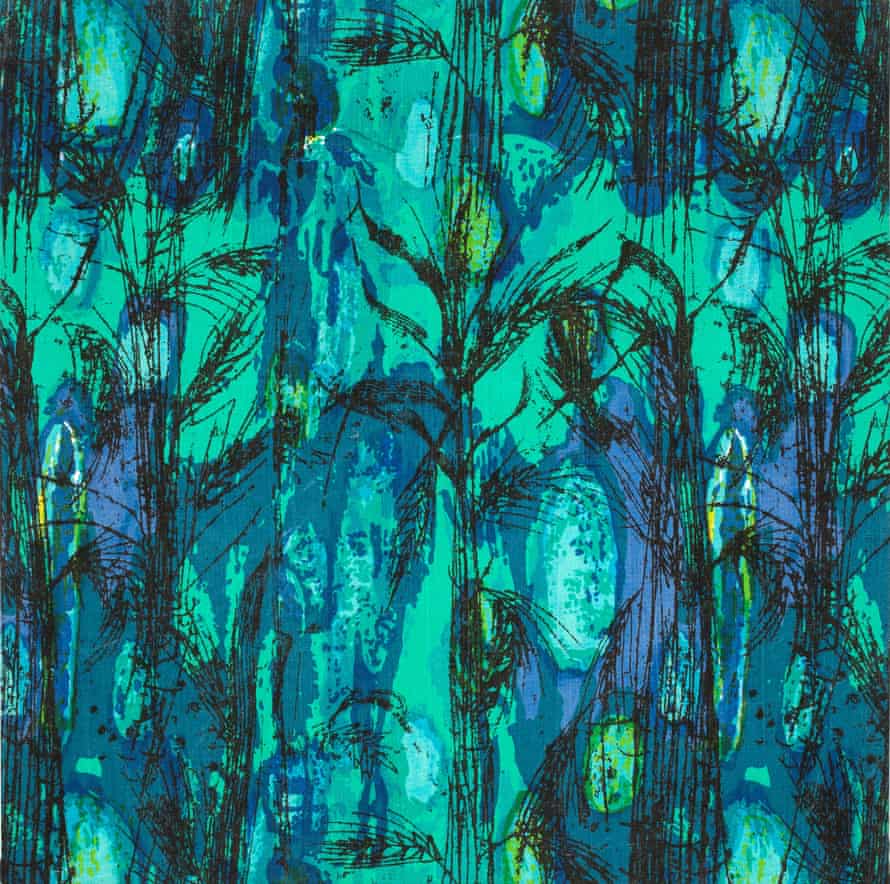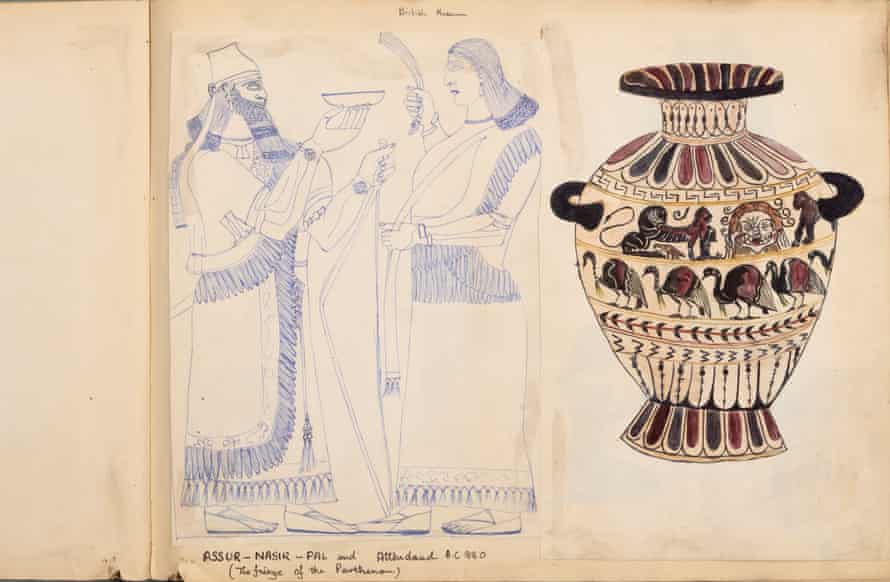The Trinidad-born British designer and artist Althea McNish’s bold textile prints rescued 1950s Britain from postwar gloom, ushering in the upbeat 60s with outsize flowers in a humid palette. Her early work with forward-thinking fabric producers such as Liberty, Ascher Ltd and Hull Traders brought Caribbean heat into British living rooms, while Christian Dior and Balenciaga used her pop-bright prints on floaty silk dresses.
“She layered two unique identities,” says Rose Sinclair, the co-curator of Colour Is Mine, a long-overdue, posthumous survey of McNish’s 70-year career. “In terms of the Black influence on British culture, her textiles say it loud and clear.”
Sign up to our Inside Saturday newsletter for an exclusive behind-the-scenes look at the making of the magazine’s biggest features, as well as a curated list of our weekly highlights.
A photo of McNish from 1966 suggests her reach. She’s in her studio, behind a desk laden with pots and brushes, while hectic mood boards cover the walls. Shot from below with her head turned, mid-conversation, it is an empowering image that casts her as a busy career woman and an aspirational figure for readers of the publication that commissioned it: the Daily Mail. The portrait ran with a story on McNish’s contribution to that year’s Ideal Home Show, a “bachelor girl’s room” for the metropolitan twentysomethings busily dismantling traditional female roles.
At the other end of the scale, McNish clothed the Queen for her official visit to Trinidad and Tobago that February. As Sinclair puts it: “She’s a rare Black woman within international textile history. She broke boundaries.” McNish had a far steeper hill to climb than her peers. “She was decorating the domestic space, up and down the country, at a time when the frame for a lot of Black people was: ‘You should go back home,’” the curator says. “She changed the spaces that people inhabited.”
The forthcoming retrospective is set to reveal a life full of luminous firsts. McNish originally came to Britain in her late 20s to undertake an architecture degree, which she gave up in favour of printmaking. She completed her studies at the Royal College, although Sinclair credits evening classes with the pioneering pop artist Eduardo Paolozzi for first introducing McNish to textiles’ potential. Her technical prowess was unusual, creating multilayered prints whose complexity is nigh-on impossible to imitate. “When you’ve got a piece that has 17 screens and colours in it, who’s going to copy it?” asks Sinclair.
It was what McNish described as her “tropical eye” that caught the attention of her early champion, Arthur Stewart-Liberty. When a designer’s expected career path meant learning the ropes in someone else’s studio, Liberty took the rare step of commissioning exclusive designs from her as soon as she graduated in 1957. Transforming, as McNish once said, “the flowers of the English countryside [with] tropical flamboyance”, her iconic prints explode with brushy depictions of giant blooms and free-floating foliage. The colours sizzle and ping: rose red against violet, tangerine over deep pink, lime with the perfect turquoise of a still, warm sea. The designer summed up her approach with a simple, uncompromising affirmation: “I’m a citizen of the world and I am multicultural. […] My textiles are the statement of my being.”
Colour field: works by Althea McNish

Golden Harvest, designed for Hull Traders, c1960s
This marks an important moment in the development of McNish’s “tropical eye”. The colourway recalls the lush blue Caribbean ocean, but the print’s harvest grew in England. She was a student picnicking in an Essex wheat field when she had the idea for it.
Orina Danasco, 1960 (main picture)
This design shows McNish pushing her organic forms into abstraction, and is unusual in its direct use of black. The designer once said: “Grey is a colour I would never use […] Black … has the power in it to do what I want.”

Ideal Home Exhibition, 1966
This portrait shows McNish in her studio preparing for the exhibition, where she exhibited her “bachelor girl’s room”. Sinclair says: “It was to be designed for the 26-year-old girl about town, [someone] not too flash with money. It is the textiles that make the statement.”

Student sketchbook, 1954
McNish’s sketchbooks show the breadth of her influences. Kew Gardens was a favourite haunt, but so too was the British Museum, where she studied ancient cultures. As Sinclair says: “Her attitude echoed Trinidad itself and its diversity of cultures. She recognised her own mixed cultural heritage.”
Althea McNish: Colour Is Mine is at the William Morris Gallery, London, from 2 April until 11 September.

